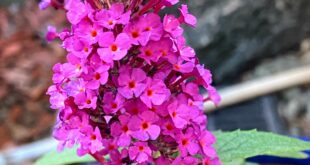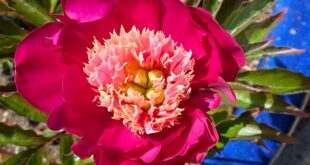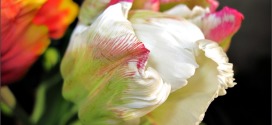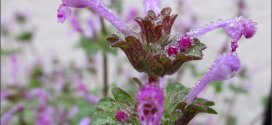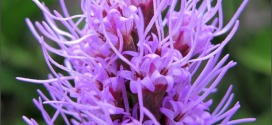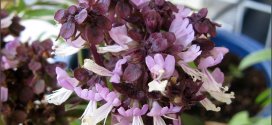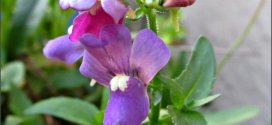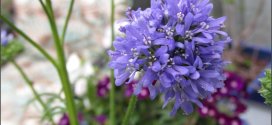The Sweet Scent of Success: Growing Sweet Alyssum in Your Garden Gardening enthusiasts often seek flowers that are not only visually appealing but also easy to grow and beneficial for the environment. Sweet alyssum, with its delicate blooms and honey-like fragrance, ticks all these boxes. In this blog post, we’ll explore the charm of sweet alyssum and how you can …
Read More »Tag Archives: purple
Buddleja davidii ‘Hot Raspberry
This latest in the Buzz series of compact butterfly bushes features vivid fuchsia-pink flowers on 10” long arching cones. Blooming from early summer to late fall, the sweetly scented flowers are a magnet for bees, butterflies & hummingbirds. Once established, plants are covered in vibrant swathes of hot raspberry flowers. This award winner is definitely meant to be a focal …
Read More »Peony ‘ Celebrity’
Gigantic rose-pink blooms surround the white tufted centers of this aptly named beauty. It’ll be the star of your long-running garden show with its delightful fragrance and attractive foliage — perfect for borders, beds and cut flowers. Plant the peonies bare root not more than 2 inches deep to help create strong root growth in the first year. Be patient …
Read More »Tulip – Ruffled
The majority of tulips (Tulipa spp.) flower naturally in the spring, making them a symbol of new life and renewal. Many varieties of tulips produce blooms in varying shades of yellow, adding a cheerful “hello” to the new growing season. Yellow tulips require the same care and maintenance as other colored tulip varieties. Daffodils (Narcissus spp.) and tulips (Tulipa spp.) …
Read More »Henbit
Henbit is a small but pretty winter wildflower. Hummingbirds enjoy this wild edible for the nectar. Henbit is also an important early season source of nectar and pollen for honeybees. Unlike many of its relatives in the mint family, henbit does not have a strong or distinctive mint scent. The common name, Henbit, comes from the observation that chickens like …
Read More »Liatris
Liatris is easy to grow and versatile. These 1–5 feet tall plants emerge from mounds of narrow, grass-like leaves. Liatris flowers form along the tall spikes, and these fuzzy, thistle-like blossoms, which are usually purple, flower from the top to the bottom rather than in the traditional bottom to top blooming of most plants. There are also rose colored and …
Read More »Buddleja
Butterfly Bush, Summer Lilac, Orange-eye Butterfly Bush, Buddleja fallowiana ‘Lochinch’ Family: Buddlejaceae Genus: Buddleja (BUD-lee-uh) (Info) Species: fallowiana (fal-low-ee-AH-nuh) (Info) Cultivar: Lochinch Synonym:Buddleia fallowiana Category: Shrubs Height: 4-6 ft. (1.2-1.8 m) 6-8 ft. (1.8-2.4 m) Spacing: 4-6 ft. (1.2-1.8 m) Hardiness: USDA Zone 5b: to -26.1 °C (-15 °F) USDA Zone 6a: to -23.3 …
Read More »Basil – Thai
Holy Basil, Thai Holy Basil, Ocimum sanctum Family: Lamiaceae (lay-mee-AY-see-ee) (Info) Genus: Ocimum (OSS-ih-mum) (Info) Species: sanctum (SANK-tum) (Info) Synonym:Ocimum tenuiflorum Category: Herbs Height: 24-36 in. (60-90 cm) Spacing: 24-36 in. (60-90 cm) Hardiness: USDA Zone 10b: to 1.7 °C (35 °F) USDA Zone 11: above 4.5 °C (40 °F) Sun Exposure: Full Sun …
Read More »Linaria purpurea
You can’t get any easier to grow than Linaria purpurea. Slender spikes of tiny violet-blue snapdragon-like flowers over narrow, whorled, blue-grey leaves light up many an old garden. Blooms all Summer in full sun or part shade. Fairly drought tolerant once established & it reseeds! To 3’ high & 1’ wide, it looks good in groupings. Native to southeastern Europe.
Read More »Blue Thimble Flower
The Gilia genus contains mostly desert-loving plants, native to the area stretching from the western United States to South America. Spanish botanists Hipólito Ruiz and José Antonio Pavón found the first known Gilia species on their expedition to South America, later detailing it among other species in a 1794 publication of their research from Peru and Chile. They gave this …
Read More »
